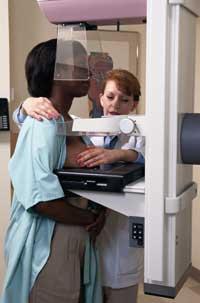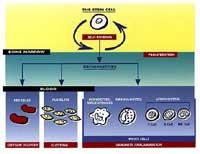Stronger is not more effective

Chemotherapy is now the most common and effective method to treat cancer. But chemotherapy is not a selective drug, it not only destroys malignant cells. Chemotherapy attacks all the cells and tissues of the body and removes healthy and completely needed cells. For example, the immune system is usually damaged in these cases. Therefore, patients cannot be given any dose: they should be given enough chemotherapy to kill cancer cells, but without completely destroying other cells.
Bone marrow, the source of all blood cells, is particularly important here. In the bone marrow there are cells called stem cells, origin of blood lymphocytes, red blood cells, platelets, etc. Stem cells constantly renew the inhabitants of the blood, those who have much to say in our health. However, very aggressive chemotherapy will also kill the stem cells mentioned and our blood will be helpless and unable to generate those defenses.
But in many cases very aggressive chemotherapies are necessary if you want to overcome the disease. Therefore, US researchers tried a new technique in the 1980s: before treating the patient with chemotherapy, the stem cells of the bone marrow are collected and once treatment is completed, these cells are placed back in place. This allows greater doses of chemotherapy.
Cancer treatment is always chemotherapy, but in this case a stem cell autotransplant is also done to strengthen the patient after chemotherapy. This strengthening is very important in the fight against the disease, since chemotherapy greatly weakens the body of the individual. The technique began to be used in the treatment of so-called liquid cancers, that is, with leukemias and some types of lymphomas and very satisfactory results.
In view of these good results, the same technique was applied in solid cancers, especially in breast cancers, but also in many others. These trials began in the 1990s or earlier.
Again, the results were or seemed very positive and began to be applied in cases of high-risk cancer or metastasis (i.e., cancer not only captured the area of origin but also other parts of the body).

Research conducted in those early years concluded that the combination of chemotherapy and self-transplantation allowed for longer maintenance and curbing of cancer development and that the technique rapidly spread to other countries around the world.
At the Cancer Institute of San Sebastian, a patient with breast cancer was first self-transplanted in May 1994. But at least in breast cancer.
Proof of this is the article that will be published on April 13 in the New England Journal Of Medicine. It explains the study carried out between 1990 and 1997. The research involved 553 patients with breast cancer, some of whom had regular chemotherapy sessions and others underwent self-transplantation. After several years of study of the evolution of these patients, no significant differences were observed between the two groups: conventional chemotherapy was as effective as aggressive chemotherapy. That is, self-transplantation is not a special advantage for the treatment of breast cancer (remember that this technique is applied in cases of metastasis or high-risk breast cancer).
The results of the research have confirmed that there is some stabilization from a chemotherapy level, or what is the same, that the efficacy of the drug is not directly proportional to the amount. That is, being very aggressor is not synonymous with being very effective. But this claim has not turned the fight against cancer upside down. Self-transplantation is an attempt against cancer that seemed very good when it was launched, although over time it has been seen that it is not so good. However, it is not a method to discard. It is currently a very effective technique for treating cancer such as leukemia.
|
Posted in Zabalik.
Buletina
Bidali zure helbide elektronikoa eta jaso asteroko buletina zure sarrera-ontzian











